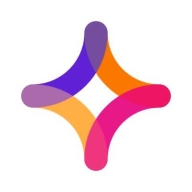

Jitterbit Harmony and Microsoft Azure Logic Apps are solutions in the cloud integration market. Jitterbit Harmony is favored for its cost-effectiveness and support, while Microsoft Azure Logic Apps is appreciated for its extensive features, giving it an edge for enterprises.
Features: Jitterbit Harmony provides flexible and fast integration capabilities with excellent customization options, making it suitable for diverse business needs. Microsoft Azure Logic Apps offers a comprehensive set of pre-built connectors and seamless integration with Azure services, making it a strong choice for complex, large-scale environments.
Room for Improvement: Jitterbit Harmony could enhance its scalability and expand its range of connectors. Additional advanced analytics features and better synergy with non-SaaS systems would increase its appeal. Microsoft Azure Logic Apps can improve by reducing its complexity and learning curve, enhancing its user interface for less technical users, and offering more competitive pricing for small businesses.
Ease of Deployment and Customer Service: Jitterbit Harmony is known for easy deployment and responsive customer support, making it a favorite for straightforward implementations. Microsoft Azure Logic Apps' deployment model integrates well within the Microsoft ecosystem, though it may require more technical expertise to set up effectively. Its customer service is solid but might not be as direct as Jitterbit's for simpler use cases.
Pricing and ROI: Jitterbit Harmony attracts cost-sensitive buyers with a pricing model that delivers a strong ROI, especially for businesses mindful of budgets. Microsoft Azure Logic Apps, although higher in cost, offers considerable ROI for enterprises utilizing Azure's broad services and scalability. Its pricing benefits organizations taking advantage of its integration within the Azure ecosystem.
You can't generalize it because it depends on how many connectors you use, how many workflows you build, what scalability is required, and the amount of data to be ingested.
It is easy to reach out to Microsoft for support if needed.
The support is good, with multiple options like developer support and 24x7 support.
It's just clicks away, and you can also set it up as auto-scaling.
I have never seen it misperforming.
We have had it implemented for two years without issues.
Microsoft Azure Logic Apps needs further development in consistency and durability, particularly for handling larger data volumes beyond 1 MB.
The business rules engine is still not fully developed, and it would be very helpful to see improvements here.
There are no upfront licensing costs or contracts you are bound to.
Microsoft provides a reliable solution, but it is considered expensive compared to others.
Microsoft Azure Logic Apps has many features that are beneficial for workflow automation, such as running automation tasks and facilitating communication between different interfaces.
The workflow in Logic Apps enables integrating multiple applications.


Jitterbit Harmony is a comprehensive platform for data integration and API management, enabling seamless synchronization and automation across cloud-based and on-premises applications.
Users leverage Jitterbit Harmony to integrate systems like ERP and CRM applications, simplifying complex data workflows and enhancing automation. It supports efficient data migration and ensures smooth connectivity, handling diverse integration needs and helping streamline business processes. Users emphasize its drag-and-drop functionality and extensive templates, which contribute to its robust performance. However, improvements are needed in data mapping, error message clarity, and documentation, especially when dealing with large data volumes.
What are the key features of Jitterbit Harmony?Companies across retail, manufacturing, healthcare, and finance sectors use Jitterbit Harmony to integrate critical applications and automate workflows. In retail, it connects inventory systems with sales platforms, reducing manual effort. Manufacturers sync their ERP systems with supply chain software, optimizing operations. Healthcare organizations integrate patient management systems with insurance databases, streamlining patient care. Financial institutions use it to connect accounting software with banking systems, ensuring real-time financial data exchange.
Connect your business-critical apps and services with Azure Logic Apps, automating your workflows without writing a single line of code.
We monitor all Integration Platform as a Service (iPaaS) reviews to prevent fraudulent reviews and keep review quality high. We do not post reviews by company employees or direct competitors. We validate each review for authenticity via cross-reference with LinkedIn, and personal follow-up with the reviewer when necessary.